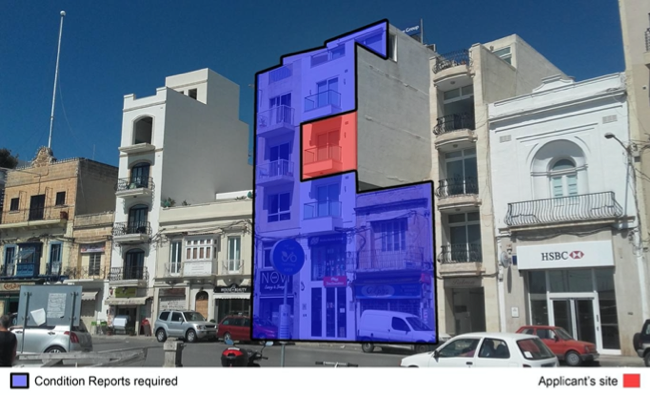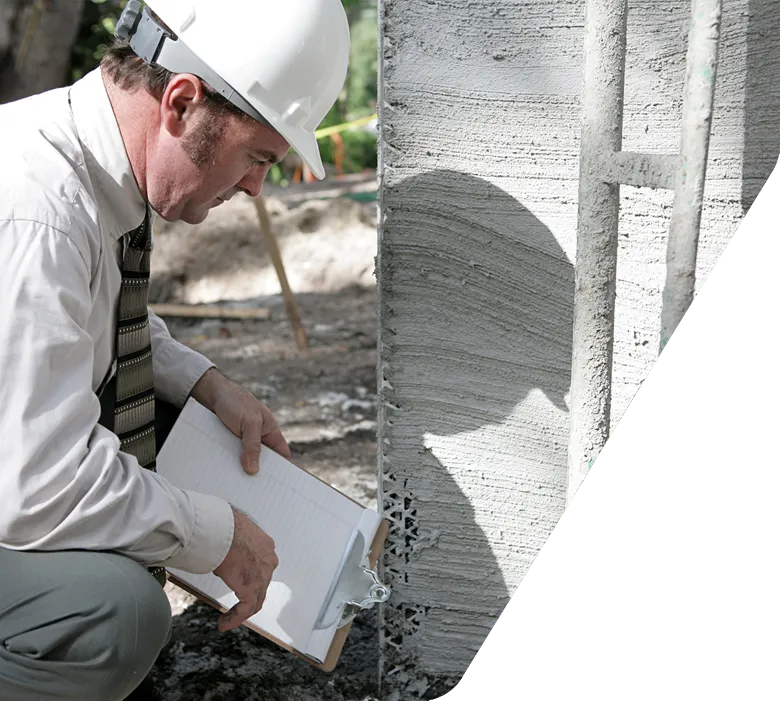Frequently Asked Questions

General
Information

Within the context of the building and construction industry, the BCA is responsible for:
– The initiation of the design, implementation and dissemination of policies
– The consolidation and review of laws and regulations.
– The compilation of minimum standards and best practices for the building industry transposed into a national building code.
This should result in the better management of the building and the construction sector in the Maltese Islands.
Current Building and Construction Regulations deal with the construction details of buildings and set down the minimum standards to safeguard third parties around buildings and construction operations. They also regulate construction related implementation methods, in-building physical infrastructure and energy efficiency of buildings.
Planning Permission: Gives the right for a person to build, modify or retain any structure on land and sea, or designates a specific use according to National Plans and Policies, which seeks to guide the way our towns, cities and countryside develop. This includes the use of land and buildings, the appearance of buildings, landscaping considerations, highway access and the impact that the development will have on the general environment.
Building and Construction Clearance: Following the granting of Planning Permission, but prior to the commencement of works on site, a list of the main individuals responsible for the execution of a project is compiled and submitted to the BCA by the responsible Perit. Additionally, a set of other documents, namely, Condition Report/s of third-party contiguous property, Method Statement, Insurance Policy and Bank Guarantee are also required to be submitted. Following the submission and review of these documents, the BCA may grant clearance for the works to commence.
The Developer
The Developer is the individual or entity in whose name the application for a development permit had been submitted. The Developer may also be the individual or entity carrying out the construction works.
The Perit
The Perit is the warranted professional assuming the responsibility for the execution of the project approved in the development permit.
The Contractor
The Contractor is the individual/entity engaged by the Developer to execute the works.
The Site Technical Officer (STO)
The Site Technical Officer is the individual nominated by the contractor and is responsible for the implementation of the method statement which is prepared by the Perit. Where breaches by the Contractor occur, the STO shall immediately stop any ongoing works and inform the Perit in charge together with the BCA. When an STO is served with an Enforcement Notice, he/she shall immediately inform the Contractor and the Perit and see that it is complied with.
The Site Manager
The Site Manager is the person responsible for the management of a construction site, ensuring that any permits, certifications, authorisations, or any such clearances required for any portion of the construction works are in place. He is also responsible for the forbidding of access to site and for reducing pollution related to noise and dust emissions.
The Worker
A worker is an individual working on a construction site for, or under the supervision of, either a Developer or a Contractor.
Permitting

BCA communicates the clearance to both the Perit in charge of the application and the Developer, which document is available to the public on the PA EApps portal (website that Periti use to communicate with the Planning Authority).
It is of utmost importance to engage a warranted Perit of your choice for professional guidance.
The developer is required to make a condition report of the buildings contiguous to the site. Therefore, neighbours are to be duly informed about the compilation of such condition report so that they can set up an appointment with the developer’s Perit to assess the neighbour’s building. Following this, the neighbours may object to the condition report. The neighbours can also object at any time after the method statements are uploaded on the EApps platform.
Following the introduction of S.L. 623.06 (Regulation 7(11)), as from February 2022, in the case of excavation works (and where applicable), third parties that fall within the affected zone have the right to appoint a perit of their choice to review the method statements and/or condition reports submitted and approved by the developer (representative).
Third party refers to any person holding a legal title to or legal use of any contiguous property to the construction site. Therefore, anyone who owns or occupies any property by any legal means that is contiguous to a construction site and in the case of excavation, the properties which fall within the affected zone of excavation is considered as a third party.
These regulations shall be applicable to any construction Applicability. work which involves:
(a) excavation, that in its affected zone includes third party property; or
(b) the demolition or removal of any existing structure, or roof or structure abutting with, or immediately adjacent to, or underlying or overlying any property belonging to or occupied by third parties or toothing work with existing buildings; or
(c) the building of additional storeys or load-bearing walls or structures over any property belonging to or occupied by third parties; or
(d) the construction of new buildings or additional storeys adjacent to existing third-party property.
- The new responsibility detailed forms (full 8 pages) which may be downloaded from our website;
- The new responsibility summary form which may be downloaded from our website;
- Detailed Demolition Method statement (if applicable) using the Authority’s official template;
- Detailed Excavation Method statement (if applicable) including the ground investigation using the Authority’s official template;
- Detailed Building Method statement (if applicable) using the Authority’s official template;
- Separate detailed condition reports of all contiguous properties which are located adjacent, overlying, or underlying any site, on which construction works are going to be carried out, and in the case of excavation, the properties which fall within the affected zone of excavation. Condition reports must be submitted on the Authority’s official template;
- Declaration to the Building and Construction Authority regarding Third Party Property Condition Reports and Excavation Affected Complexes submitted on the Authority’s official template;
- Insurance – a declaration of insurance cover to the Authority in the prescribed form as per LN 38 of 2024 reg 3 & 5 (only)
- A bank guarantee in favor of the BCA and issued in the name of the developer in terms of SL623.06 (regulation 6) equivalent to the maximum amount in excess indicated in the insurance policy. (Original to be deposited at our offices)
- If applicable, a bank guarantee in favor of the BCA and issued in the name of the developer (Original to be deposited at our offices) in terms of SL623.06 (regulation 7) if third party complex or complexes fall in the affected excavation zone. The value of the bank guarantee shall be of five-hundred-euro (€500) plus VAT for each affected complex.
- Bank Guarantee in favour of the BCA and issued in the name of the developer in terms of SL623.08, the value of which is indicated by the Planning Authority in it’s decision notice (if applicable).
No. Currently, there are no fees relating to the submission of documents.
As at present the number of Bank Guarantees required may vary.
1. From the 16th of December 2022, with the coming into force of SL 623.08, a new Bank Guarantee that previously used to be deposited and managed by the Planning Authority is now the responsibility of the BCA. The value of this Bank Guarantee depends on the size of the development and how much public footpath is affected. In this case, the value of the bank guarantee required will be included in the Planning Authority’s development permit.
2. Another Bank Guarantee is the one related directly to affected Third Parties (as per LN 136 of 2019 (as per Regulation 6(3) of SL 623.06). Its value is determined by the highest excess indicated by the insurance policy.
3. A third Bank Guarantee in terms of LN 468 of 2021 (as per Regulation 7(11)(c) of SL 623.06) is also required only in the case where excavation works with third party properties falling within the affected zone of excavation are to take place. The amount of this Bank Guarantee varies and depends on how many “complexes” are going to be affected by the development.
All bank guarantees shall be released by the BCA when the Final Completion Certification is uploaded by the Perit, together with the signed third-party declarations stating that there are no claims for damages or that all damages have been settled in full.
Furthermore, when the third-party declarations are not submitted, the bank guarantee will be released within three months following the Final Completion Certification and the notification sent to third parties being informed that the proposed works are completed by means of a registered letter.
No, each and every commercial bank has its own form for specific use.
The architect is to inform the BCA that works are complete by uploading the Final Completion Certification form within two weeks of completion of works.
Signed third party declarations of no claims for damages/ damages have been settled in full, are to be also uploaded together with photographic evidence of the completed works.
The bank guarantee will then be released by the BCA and sent to the respective bank by our couriers.
The declaration is to be sent to the third party by means of registered mail and registration slips are to be uploaded by the architect as evidence of notification.
After the expiration of three months, should the BCA not receive any notification by third parties that judicial proceedings have been initiated, the bank guarantee will be released.
Yes, a condition report is required for all underlying and overlying levels within the building.

According to regulation 7 of SL 623.06, the third party is entitled to a copy of the condition report of his/her her property prior to the commencement of any works. Further to this same regulation, the third party having a property which falls within the excavation affected area, also has the right to have a professional review of the method statement/s and condition report (paid for by the developer). Moreover, if there is no excavation, or when a third party does not fall within the excavation affected zone, a third party may request the BCA to review the method statement/s and condition report provided that the request is backed up by a professional’s technical opinion, at his/her own cost. A third party can also raise an issue with the BCA about non-adherence to method statements during the execution of any works provided that such request is backed up by a professional’s technical opinion at the third party’s own cost.
The aggrieved party engages a Perit to draw up a damages report which is then uploaded on EApps. At this stage, the bank guarantee submitted by the developer is blocked. If the Authority does not receive notice of any judicial proceedings by aggrieved party within three months of final completion and third-party notification by registered letter, the bank guarantee will be released.
It is the person that has suffered damages, who must pay for the Perit’s fee.
It will be the owner/s of the adjacent complex which falls under the excavation zone and who is contesting the demolition/excavation/construction method statement that must pay his Perit for a maximum fee of €500. The same owner/s is eligible for a reimbursement by the developer.
This benefit applies only when there is excavation involved.
This bank guarantee according to regulation 7 of S.L. 623.06 (LN 468 of 2021) covers the architects’ professional fees when representing third parties whose properties fall within the Affected Excavation Zone.
A claim for re-imbursement of architect’s fees is only possible if
1. the contesting third parties amount to more than 50% of the complex and
2. the same architect is used.
As above, this benefit applies only in the case of construction sites where excavation works will be undertaken. Unfortunately, third-party properties contiguous to a construction site where no excavation works will be carried out or do not fall within the excavation affected area, are not entitled to this benefit and any professional fees incurred to file an objection will have to be shouldered by the third party.
A zone adjacent to a site having excavation works, that is within a distance, from the limits of the excavation, of not more than the equivalent measure for the depth proposed for the excavation.
The affected zone of excavation is the zone adjacent to excavation works, which zone has a horizontal distance equivalent to the proposed depth of the excavation around the boundary of the excavation area.
Prior to granting clearance, all the obligatory documents submitted by the client and his representative are reviewed by BCA. At this stage and only, if necessary, feedback will be provided. It is not possible to specify how long the whole process takes since each application is reviewed on its own merit and response depends on feedback (when required) from the applicant’s representative.
Those properties that are contiguous to the proposed development and those that are affected by the excavation and fall within the excavation affected zone. Third Party have the right to review ONLY the condition report prepared for his/her property (not all the condition reports).
A geological report is required if excavations are going to be deeper than 2 metres from the existing ground level.
One can object to a method statement as soon as this is uploaded on EApps.
The recipient of a condition report shall give notice to the Building and Construction Authority of his disagreement with the condition report within two weeks.
All applications are reviewed on a case-by-case basis by the BCA.
Complex means any property on one or more levels sharing the same footprint on party thereof and having access onto a street and where more than fifty percent (50%) of the total owners elect to commission the same permit to review the condition reports and/or method statements that were prepared by the Perit on behalf of the developer.
As soon as the third party receives a fiscal invoice from the Perit to review the method statement and/or condition report, he/she must claim the expense from the developer and notifies the BCA. The Authority shall, within two weeks from the submission of a final completion report by the project together with authentic copy of the fiscal receipts related to the payment by the developer with respect to such claims, release to the developer the bank guarantee. If no such receipts are submitted, the bank guarantee will be blocked by the Building and Construction Authority until the issue is settled.
There is no specific time set.
One may consider initiating legal proceedings and inform the BCA so that until the matter is resolved the developer’s Bank Guarantee is withheld.
Information that is already within the public domain can be freely accessed. However, anything which is not within the public domain requires the consent of the data subject.
Until the insurance is renewed, works are to stop immediately as they go against the BCA Clearance Terms and Conditions.
Inspection
and Enforcement

The Site Manager is bound to take the necessary precautions and measures to prevent dust emissions from dispersing onto public area and third-party property. S.L. 623.08 specifies that no person shall undertake any construction without utilizing the following dust control measures:
- Apply water and/or, chemical dust stabilizers or any other appropriate dust control technique;
- Remove any works related spillages resulting from the works from the public way in front of the site;
- Sweep or vacuum on a daily basis public sidewalks and public areas within ten (10) metres;
- Prevent paint chips, sanding residue, grit and dust from coming into contact with storm-water runoff and surface water bodies.
The law also states that without prejudice to any other law, any person undertaking any sanding activity whether manual or mechanical shall ensure that dust emissions are controlled by equipping all mechanical equipment with dust extraction and recovery systems.
All external apertures must be boarded with material that must form a barrier against the escape of fugitive dust emissions outdoors prior to commencing any sanding operations.
It is mandatory to erect a protection around the construction site to enclose the area and protect surrounding sites from dust and any falling materials.
The Site Manager shall take all measures as provided in the second schedule of S.L. 623.08.
A complaint may be lodged with BCA through its Customer Care. Should a contiguous property suffer any damages due to the ingress of water, a damages report is uploaded by a Perit on PA’s EApps portal.
S.L. 623.08 stipulates that where the construction necessitates the obstruction of the pedestrian pavement, and this is approved by the Local Council, a temporary pedestrian pavement shall be provided, and it shall be always kept clear of obstruction.
However, a permit from Transport Malta is required in line with Article 42 of SL499.57
Demolition can take place between 7.30am and 8pm from Monday to Saturday but excluding Sundays and Public Holidays. However, the use of a mechanical excavator with a hydraulic hammer attachment and “pneumatic drill” (such as electrical jiggers, jack hammers etc.) is prohibited before 7.30am and after 4pm
It is the project Perit’s responsibility to assure that the common wall can withstand additional load. However, owners of contiguous properties may submit contestations on method statements ideally providing technical justifications.
This is not regulated by the BCA.
This is not regulated by the BCA.
Construction work may be carried out from Monday to Saturday – between 07:00 and 20:00.
During Sundays and Public holidays no construction works are permitted.
However, the below machinery may ONLY be operated from Monday to Saturday between 07:30 and 16:00
1. Mechanical Excavator with a hydraulic hammer attachment
2. Pneumatic drill (such as electrical jiggers, jack hammers etc.)
The BCA may take enforcement action where infringements occur. This may also include administrative penalties and Criminal Proceedings.
Licensing

The only required document to apply for a Mason’s license is a recent Police Conduct Certificate. Follow link for further details – https://bca.org.mt/application-info/
The respective expiry dates of masons’ licences are staggered on a monthly basis throughout the year according to the first letter of the surname. Masons are being notified immediately after their licence expires but the same licence will still be considered valid for 30 days after its expiry date. Payments can be carried out either at our offices, only by means of a credit/debit card or online by following the instructions given on the notification they receive. An extended mason’s licence once renewed will remain valid for a year. If a licence is not renewed within the mentioned 30 days, the bearer of the respective licence will be considered as no longer interested in such a renewal.
As per S.L. 623.06 a Site Technical Officer has to be either a Perit or a person who is in possession of a Bachelor’s degree in Engineering.
S.L. 623.08 stipulates that the appointed site manager may be either of the following: (a) the owner himself; the project supervisor as construed in the Work Place (Minimum Health and Safety Requirements for Work and Construction Sites) Regulations; (c) a Perit as defined under the Periti Act and (d) any other competent person
In the absence of a nomination for the appointment of a site manager, the owner will be deemed to be the site manager.

